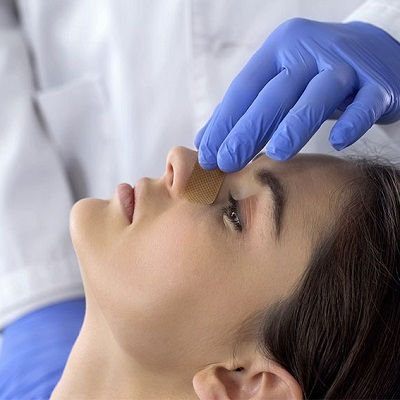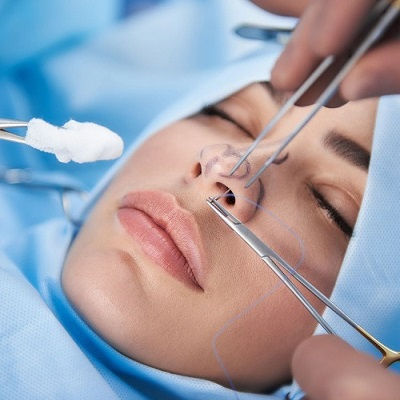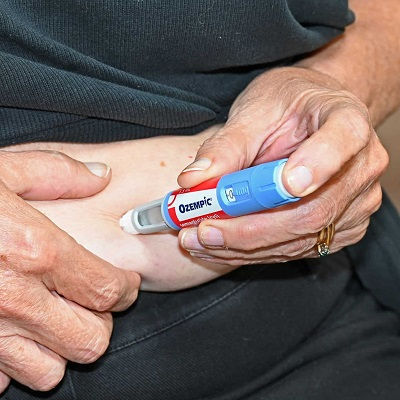How Painful Is the Recovery After Turbinate Reduction?
- aliza khan
- May 27
- 5 min read
Turbinate reduction is a widely performed ENT procedure designed to relieve chronic nasal congestion, improve airflow, and enhance overall breathing comfort. It is often paired with septoplasty when structural issues are present in the nasal passages. Patients considering Septoplasty & Turbinate Reduction in Oman commonly express concern about one key aspect of the process—how painful is the recovery period, and what can be expected in terms of discomfort?
Understanding what the recovery phase involves, how long the discomfort lasts, and what strategies help manage symptoms can greatly ease anxiety and help patients prepare more effectively for a smooth experience.
Setting Expectations: Understanding Turbinate Surgery and Recovery:
What Happens During Turbinate Reduction?
Turbinate reduction targets the inferior turbinates—structures that regulate airflow and humidity in the nose. When these turbinates become swollen due to allergies, sinus infections, or structural imbalances, they can block nasal breathing. The surgery involves removing or shrinking part of the turbinate tissue to restore open passages.
Techniques include:
Submucosal resection: removal of soft tissue while preserving the surface lining
Radiofrequency ablation: non-invasive shrinkage using thermal energy
Out-fracture: repositioning the turbinate bone outward
Microdebrider-assisted reduction: precise removal of obstructive tissue
Each method varies slightly in terms of postoperative discomfort, but all aim to preserve function while relieving obstruction.
Common Reasons for Postoperative Pain:
Patients undergoing septoplasty & turbinate reduction in Oman typically report mild to moderate pain, though this varies based on individual tolerance, surgical technique, and the presence of septoplasty. Pain results from:
Tissue inflammation and swelling
Nasal packing or splints (if used)
Dryness and crusting during healing
Bruising or internal pressure
The goal is not to eliminate sensation entirely but to manage it effectively through pain relief and proper care.

Pain Levels in the First Week After Surgery:
Day 1–3: The Peak of Discomfort:
During the initial 72 hours after surgery, the nose and surrounding areas will likely feel sore and swollen. Many patients describe the pain as dull pressure or congestion rather than sharp or intense. Common symptoms include:
Facial heaviness
Difficulty breathing through the nose
Tenderness around the nostrils and upper lip
Post-nasal drip causing throat irritation
Pain is typically manageable with over-the-counter medications such as acetaminophen or ibuprofen. Some patients are prescribed stronger analgesics for the first few days, especially when septoplasty is performed alongside turbinate reduction.
Day 4–7: Beginning of Improvement:
By the fourth or fifth day, pain generally begins to subside. Swelling decreases, nasal passages start to open, and the sense of discomfort transitions to mild pressure or itching as healing progresses. Patients may still experience crusting or scabbing inside the nose, which can cause slight irritation when breathing.
Saline rinses and humidification are strongly encouraged to ease dryness and promote healing without increasing discomfort.
Beyond the First Week: Long-Term Recovery Pain:
Week 2–3: Subtle Residual Sensations:
At this point, most patients feel significantly better and are able to resume light activities. Any lingering discomfort is usually caused by:
Dryness in the nasal cavity
Light congestion in the mornings
Sensitivity to temperature changes or dust
Ongoing crust formation is common, especially if septoplasty was also performed. This may cause slight stinging or pulling sensations but is typically not described as painful. Gentle saline irrigation continues to be the best remedy.
After 1 Month: Minimal Discomfort:
By four weeks post-op, the nose is largely healed, although the internal tissues continue to regenerate. At this stage, pain is rare, and most patients report normal or improved nasal function. Any lingering tenderness usually disappears by the six-week mark.
Patients who underwent septoplasty & turbinate reduction in Oman with modern, tissue-sparing techniques often experience faster healing with minimal pain compared to outdated methods.
Factors That Influence Recovery Pain:
Surgical Method Used
Radiofrequency and coblation techniques are associated with significantly less postoperative pain than traditional excision or cautery.
Submucosal resection may involve deeper tissue manipulation and, thus, slightly more discomfort.
Surgeon Skill and Approach:
Experienced ENT surgeons who utilize advanced tools and minimally invasive strategies can greatly reduce trauma to nasal tissues, leading to less postoperative pain and faster recovery.
Individual Pain Tolerance:
Pain is subjective. Some people tolerate nasal surgery with little more than a sensation of pressure, while others are more sensitive. Personalized pain management plans are critical.
Combination with Other Procedures:
When turbinate reduction is combined with sinus surgery, polyp removal, or septoplasty, the intensity and duration of pain may increase temporarily. However, the overall healing trajectory remains positive.
Managing Pain Effectively at Home:
Medication Strategies:
NSAIDs (ibuprofen, naproxen) help reduce both pain and inflammation
Acetaminophen offers effective relief without affecting blood clotting
Topical sprays (as directed) may reduce swelling internally
Antibiotics (if prescribed) prevent infection, which can amplify discomfort
Always follow your surgeon’s dosage instructions and avoid aspirin unless specifically advised.
Saline Irrigation:
One of the most powerful tools for recovery, saline rinses:
Clear out mucus and crust
Soothe irritated tissue
Reduce risk of infection
Make breathing easier, indirectly relieving pressure
Patients often perform saline rinses multiple times a day during the first two weeks.
Humidification and Hydration:
A humidifier keeps nasal tissues moist, preventing painful crusting. Staying well-hydrated internally also supports mucosal healing.
Activity Restrictions:
Strenuous activities can increase blood flow to the head, intensifying swelling and discomfort. Patients are advised to:
Rest with head elevated
Avoid bending, lifting, or exercise for the first 7–10 days
Avoid hot showers or environments that can trigger bleeding or inflammation
When Pain May Be a Sign of Complication:
While most pain after turbinate reduction is normal, certain red flags may indicate issues that require medical attention:
Sudden sharp or severe pain that doesn't respond to medication
High fever
Foul-smelling discharge
Heavy bleeding
Vision changes or headaches
If any of these symptoms occur, prompt evaluation by the surgical team is essential.
Emotional and Psychological Aspects of Recovery:
Anxiety About Breathing and Pain:
Many patients feel anxious about not being able to breathe easily during early healing. This can intensify the perception of pain. Knowing that this phase is temporary and expected can ease fears.
Mindfulness practices, proper education, and realistic expectations all help reduce stress and improve pain tolerance.
Sleep Disturbance:
Pain, congestion, and the need to sleep upright can affect sleep quality during the first week. Short-term use of sleep aids or pain relievers before bed may help. Within two weeks, most patients return to regular sleep patterns.

Patient Testimonials on Pain Experience:
Mild Discomfort and Fast Recovery:
“I was surprised by how little pain I had after my turbinate reduction. It was more like sinus pressure than anything else. The nasal rinses were a game changer.”— 42-year-old patient with allergic rhinitis
Moderate Pain but Worthwhile Results:
“Days 2 and 3 were the toughest, but by the end of the week, I felt much better. I wouldn’t say it was pain-free, but it was absolutely manageable. Breathing is so much easier now.”— 34-year-old patient after septoplasty & turbinate reduction in Oman
More Sensation Than Pain:
“It wasn’t painful in the traditional sense—more uncomfortable. It felt like I had a head cold for a few days. After two weeks, I could tell the difference in airflow and smell.”— 55-year-old patient post turbinate radiofrequency procedure
Tips to Make Recovery Easier and Less Painful:
Set up a recovery station at home with tissues, saline spray, pain meds, and soft foods
Follow all postoperative instructions carefully
Attend follow-up appointments to monitor healing
Ask your surgeon about packing-free techniques, which tend to be less painful
Avoid blowing your nose too forcefully for at least 10 days
Eat soft, hydrating foods to avoid irritation
Final Thoughts:
While the thought of nasal surgery can be intimidating, most patients find the pain after turbinate reduction to be mild and short-lived. Advances in technique, better postoperative care, and clear guidance have transformed the recovery experience into a manageable and rewarding journey. Within just a few weeks, patients can expect not only significant relief from nasal obstruction but also a smoother, healthier breathing experience.



Comments